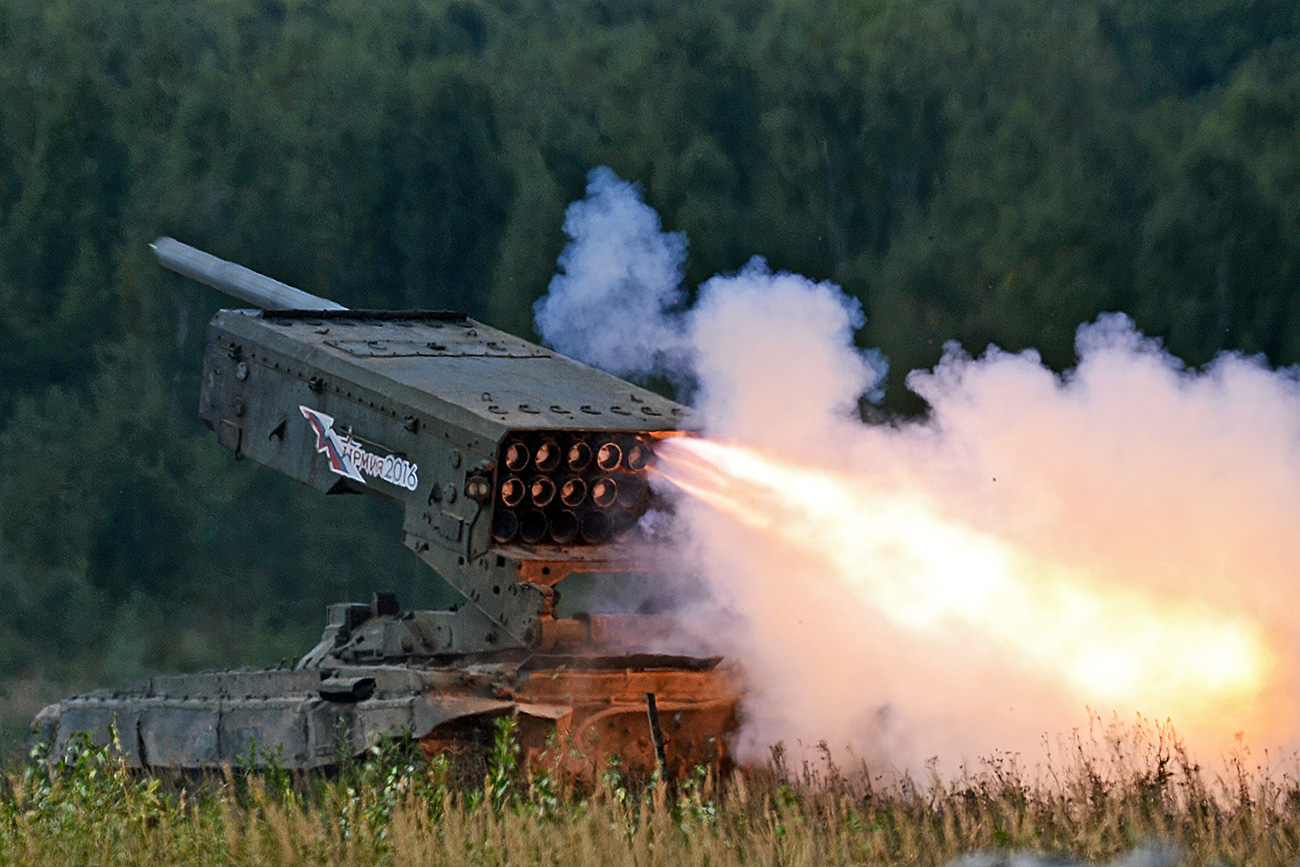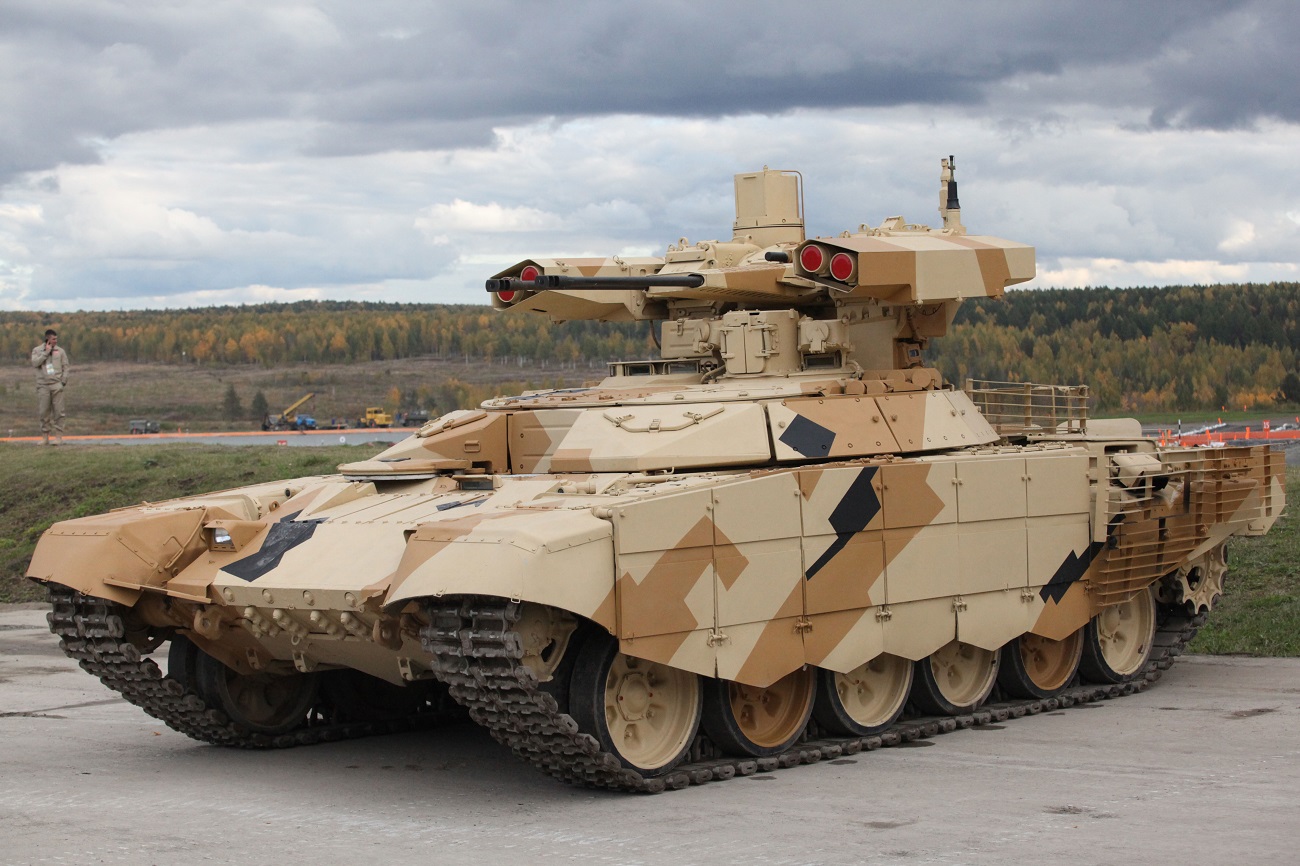Horsemen of the Apocalypse: Russia’s 4 most dreaded military inventions

A T-72 TOS-1 "Buratino" heavy flamethrower system during a demonstration exercise held at the Alabino training ground as part of the international military-technical forum ARMY-2016.
Evgeny Biyatov/RIA Novosti1. The Father of All Bombs
 Its destructive power is comparable to that of a nuclear warhead. Father Of All Bomb. Source: RIA Novosti
Its destructive power is comparable to that of a nuclear warhead. Father Of All Bomb. Source: RIA Novosti
In April 2017, the U.S. bombed the Islamic State terror organization in Afghanistan with the “Mother of All Bombs”—the GBU-43/B Massive Ordnance Air Blast (MOAB), the most powerful non-nuclear weapon in its arsenal. At least 36 militants died in the blast, and warehouses containing weapons and military equipment, as well as several underground tunnels, were destroyed.
A similar bomb exists in Russia, but far more powerful. Despite its smaller mass, the Russian volumetric-detonating aerial munition (ODAB) packs more than four times the punch of the American MOAB, with a yield of approximately 40 tons of TNT equivalent. What’s more, the Russian “Papa” (as the bomb is affectionately termed) has double the guaranteed kill distance of the U.S. “Mama.”
The design of the ODAB is highly original. The nose houses a complex electromechanical device intended for arming and spraying explosive material. When the device is dropped, chemicals are released after a time delay. The resulting aerosol turns into a gas-air mixture then detonated by a fuse. The ODAB generates a shock wave with a boost pressure of about 3000 kPa (30 kgf/cm), creating an airless vacuum at the explosion’s epicenter. This differential literally rips the insides out of anything in its path, even buildings.
2. Sarmat replaces an aging Satan
The RS-20V Voevoda intercontinental ballistic missile (NATO designation: SS-18 Satan) is the largest and most ferocious strategic missile in the world. Weighing about 210 tons, it can deliver 10 nuclear warheads, each 750 kilotons, to its target. Satan can wipe out a city the size of Moscow or New York.
This missile is getting old, however, and so Moscow has a replacement - the Sarmat, which is an ICBM scheduled to enter service by the end of the START III treaty in 2021. It will be twice as light and able to carry not 10, but 17 independently targetable warheads with a capacity of 300 kilotons each. What’s more, they will not be the usual “dumb” explosives tracing a parabola to the target after separation, but they will be hypersonic maneuvering missiles.
3. Terminator

Two 30-mm cannons, guided anti-tank missiles and machine guns. All this is combined with the driving power of the T-72 tank together with armor plating and chassis. In late 2017, the Russian tank support vehicle BMPT-72 (unofficially named the "Terminator") saw combat in Syria.
The Terminator can move over rough terrain at a speed of 60 km/h, cross ditches, and smash through, or get over, 1.5m high walls. Its guided missiles can easily take out an enemy tank at a range of up to 5,000 meters, as well as a super-secure fortified structure. It can battle helicopters, and its formidable firepower can neutralize enemy personnel in a range of 3 km.
In addition to the 30-mm cannons with 850-round ammunition, Terminator is equipped with four Shturm-S anti-tank missile launchers with thermobaric warheads, as well as a new Kord machine gun with an ammunition load of 2,000 cartridges.
4. Hurricane of Fire

Another member of the caterpillar-track killers is the TOS-1 Buratino heavy flame-throwing system. Like the fairy-tale character, Buratino, (the Russian version of Pinocchio), this system can push its “nose” into any hole. The vehicle is based on the T-72 tank. Instead of a gun mount, however, it features 30 tubes (220-mm caliber) capable of unleasing a hurricane of fire in just a few seconds; the missiles contain a thermobaric mixture that literally smash shelters and troops into smithereens with shock, fire and shrapnel.
The real hell begins afterwards, however. The thermobaric charge in each projectile creates an “air-mixture cloud” that explodes, creating pressure at a temperature of around 3,000 degrees Celsius, consuming all the surrounding oxygen and collapsing the pressure.
It does not take a vivid imagination to guess what happens to anyone inside this cloud. Everything within a several-kilometer radius will be destroyed - buildings, machinery and certainly not anything living.
If using any of Russia Beyond's content, partly or in full, always provide an active hyperlink to the original material.
Subscribe
to our newsletter!
Get the week's best stories straight to your inbox
